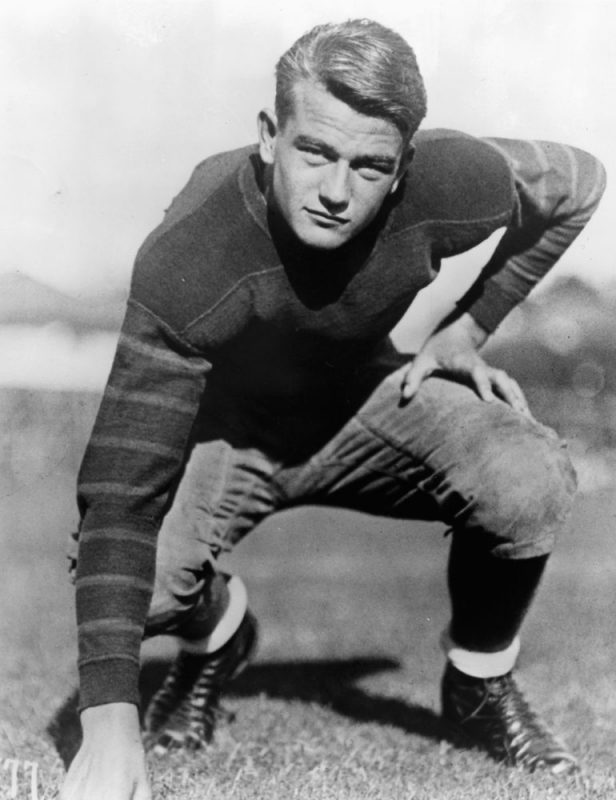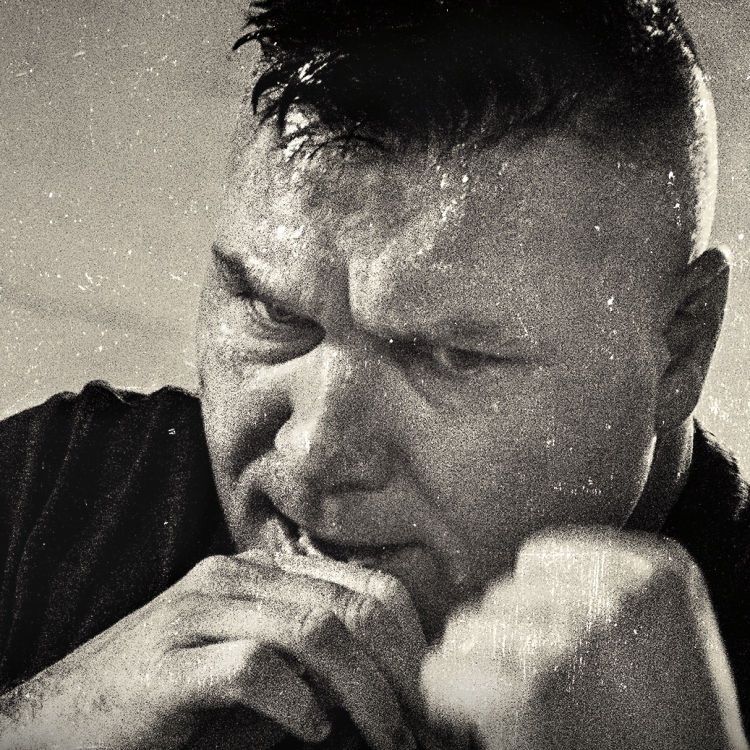
The Atlanta Falcons are known for doing bold things on NFL Draft Day, such as giving up five picks to move up and get future All-Pro receiver Julio Jones.
But their most unexpected move of all came in 1972, when they drafted John Wayne. (Rugged though the Hollywood icon’s reputation may be, he might have had a tough time on the field since he was 64.)
How did this happen?
It’s worth remembering there was a time Wayne making the NFL didn’t seem so crazy. At a powerful 6’4″, Marion Robert Morrison had gone to USC on a football scholarship. However, football abruptly ended when he broke his collarbone bodysurfing—yes, the Duke was an avid bodysurfer—and the injury forced him to drop out to make some money.
He eventually did pretty well in the movie biz. (And received his new name: John Wayne.)
We obviously associate the Duke more with Westerns and war flicks than football, though he did play a coach in 1953’s Trouble Along the Way. The film is notable for being the true origin of the saying so frequently attributed to Vince Lombardi: “Winning isn’t everything, it’s the only thing.” Bizarrely, it’s uttered by an 11-year-old girl, not Wayne. (You can watch the Trouble trailer below.)
The NFL Draft was very different in 1972. It consists of seven rounds today, but back then sprawled on for 17. Indeed, the NFL in general was a different beast. In 1969, U.S News & World Report wrote an article wondering if pro football had peaked. They reported “authoritative estimates are that the average salary is about $25,000 a year and at least half the players make $20,000” for a “working season that lasts less than six months.”
To put this in perspective, the U.S. President received a raise in 1969 to $200,000: back then, the average NFL player made an eighth of what the prez did, while they now average five times the Commander in Chief’s salary. U.S. News reported the league as a whole had earned $90 million and mused “how much higher can the football boom go?” Whereas today, Brock Osweiler has a $72 million contract, despite the fact it’s questionable if he’s good enough to start for even the Cleveland Browns.
The Atlanta Falcons were also still developing as a franchise. They had debuted in 1966. While improving, they would not make their first playoff appearance until 1978. It all added up to a case where, with their final draft pick, head coach Norm Van Brocklin could tell his team, “Do we want the roughest, toughest S.O.B. in the draft?!” and then call up the NFL and announce, “Atlanta picks John Wayne of Fort Apache State.” (Fort Apache, of course, being a 1948 Wayne film directed by John Ford.)
Sadly, NFL Commissioner Pete Rozelle blocked the move, reportedly after a representative of the Saints objected to “John Wayne of Apache U.” as being fraudulent. (In fairness, it was fraudulent, as Wayne hadn’t attended Fort Apache State or Apache University, as both institutions are imaginary.)
Denied the roughest, toughest S.O.B. in the draft, Van Brocklin—a former MVP and Hall of Famer during his playing days—was eventually fired by the Falcons in 1974. Wayne himself died at 72 in 1979. Yet 45 years later we can still fondly look back on what must be viewed as the absolute zenith of American masculinity, when Wayne and the NFL briefly came together.
—Sean Cunningham for RealClearLife
Whether you’re looking to get into shape, or just get out of a funk, The Charge has got you covered. Sign up for our new wellness newsletter today.

















